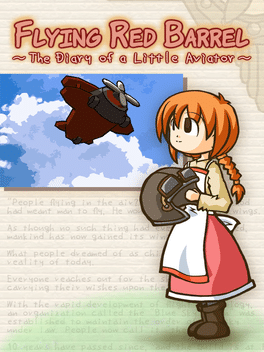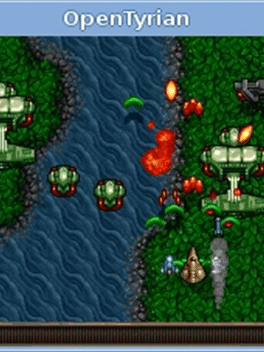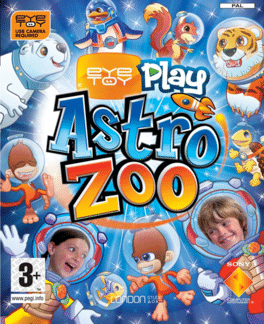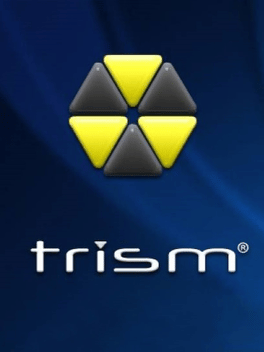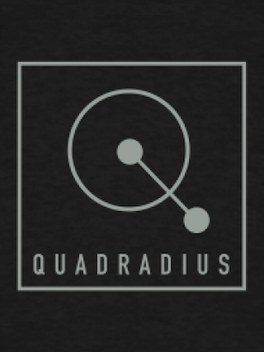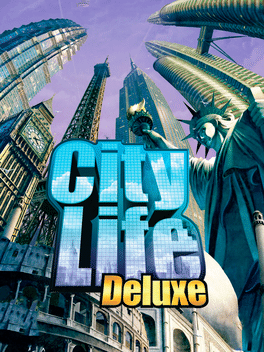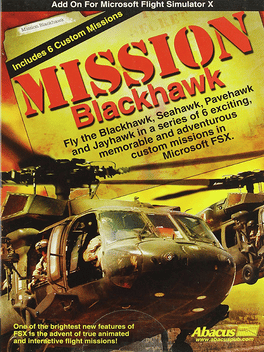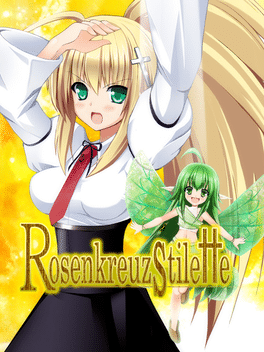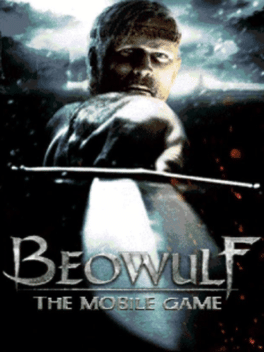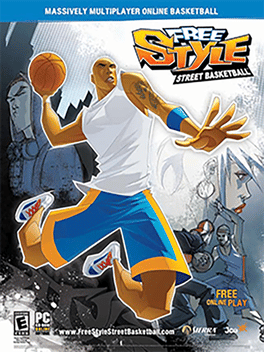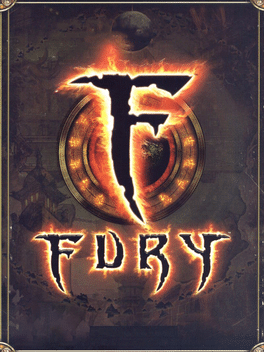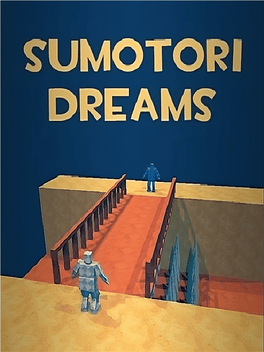New Games - Page 10037
-
Flying Red Barrel: The Diary of a Little Aviator
2007
star 7Flying Red Barrel: The Diary of a Little Aviator is an old-school bullet hell/STG game with multiple endings based on actions you take. -
Iron Kid
2007
Iron Kid
2007
Iron Kid is an Action game, developed and published by Daiwon C&A, which was released in Korea in 2007. -
Call of Duty 3: Gold Edition
2007
Expanding upon Call of Duty 3, the #1 shooter of 2006, Call of Duty 3 GOLD EDITION includes a bonus DVD of exciting content and a key code used to obtain an Xbox Live Marketplace Token for the Call of Duty 3 "Valor" Map Pack (consisting of 5 brand new multiplayer maps) for FREE. The follow-up to the #1 next-generation game, Call of Duty 3 delivers the intensity of being closer than ever to the fury of combat during the Normandy Breakout, the historic campaign that made the liberation of Paris possible and brought the Allies a step closer to Berlin. Through a seamless narrative that delivers the rush of unrelenting battle and breathtaking action, players assume the roles of four ordinary Allied soldiers American, British, Canadian and Polish and are thrust onto an authentic, living battlefield for an unprecedented variety of combat, with advanced high-definition graphics, detailed character animations and explosive on-screen action, delivering the most immersive and cinematically intense war experience ever. -
OpenTyrian
2007
OpenTyrian
2007
Tyrian is an arcade-style vertical scrolling shooter. The story is set in 20,031 where you play as Trent Hawkins, a skilled fighter-pilot employed to fight Microsol and save the galaxy. OpenTyrian is a port of the DOS shoot-em-up Tyrian. Jason Emery generously gave the OpenTyrian developers a copy of the Tyrian 2.1 source code, which has since been ported from Turbo Pascal to C. The port uses SDL, making it easily cross-platform. -
Mortal Kombat Revelations
2007
Romhack of Ultimate Mortal Kombat 3 for the Sega Genesis. It adds new characters, with a total roster of 50 playable characters. It also adds backgrounds, new moves, combos, finishing moves, and missing audio samples are restored. -
Singstar: Svenska Hits Schlager
2007
SingStar: Svenska Hits Schlager is a karaoke game featuring 30 songs by Swedish artists. There are no changes to the gameplay formula: player(s) sing into a microphone and the game gives points based on the performance. The only basis of assessment is if the correct note is hit with the correct timing; the sung words or octave does not play into the result. -
EyeToy Play: Astro Zoo
2007
A huge space comet made the Astro Zoo spin out of its orbit and sent the Jungle Pod, Polar Dome, Woodland Hub and Marine Bubble into a great big cosmic muddle! As the Space Zookeeper, it’s up to you to round up your animal friends and put everything right again – in time for tomorrow’s grand opening! Using your EyeToy Camera, players can engage in games include helping the animals find their spacesuits, going deep space sheep-shearing and herding the crocs back into their Astro tank! -
Salamander Portable
2007
Salamander Portable
2007
Salamander Portable is a compilation released in 2007 for the PlayStation Portable in Japan only. This compilation includes the two main Salamander titles, the Japanese arcade version of Life Force, as well as a enhanced port of the MSX-exclusive sequel Nemesis 2 and a port of the arcade title Xexex. -
Vector TD
2007
Vector TD
2007
Vector TD is a vector-themed tower defense game. Place your towers strategically and eliminate the incoming enemies. -
Trism
2007
Trism
2007
Trism is a puzzle game for the Apple iPhone developed by Demiforce LLC. The game and developer made the news for being a rags to riches story. The game makes use of the iPhone's built in accelerometer, and involves the sliding of colored triangular tiles called "trisms" in order to make matches of three or more. As soon as a match is made, the tiles disappear and, depending on the direction in which the iPhone is tilted, the gaps left behind will be filled. -
Quadradius
2007
Quadradius
2007
Quadradius is an intricate and competitive game of skill, chance, bluffing, and devastation. It is a turn-based board game played by 1 to 6 people on a three dimensional grid. Each piece can collect Power Orbs scattered throughout the arena, these orbs contain one of over 30 versatile powers that can be unleashed to attack, defend, foil your opponent's plans, or be combined together for even greater devastating effects. -
City Life Deluxe
2007
City Life Deluxe
2007
City Life: World Edition keeps all the great aspects of the original and expands the possibilities through exciting new content and features. Over 100 new buildings, including famous structures such as the White House, the Eiffel Tower, the Kremlin and others will be available in the game, along with new maps and a fully-integrated content editor. -
Microsoft Flight Simulator X: Mission - Blackhawk
2007
Unoficial addon for Microsoft Flight Simulator X it contains several helicopters and six missions to fly with goals: - MH-60G Pavehawk (2 Air Force liveries) - HH-60H Seahawk (Navy) - HH-60J Jayhawk (Coastguard SAR) - MH-60K Nighthawk (2 Air Force liveries) - UH-60L Black Hawk (2 Army liveries) - UK-60Q Black Hawk (Army Medevac) Missions: - Coast Guard Rescue - Operation Anti-Acid - Operation Roughneck 1&2 - The Incident -
Rosenkreuzstilette
2007
Rosenkreuzstilette
2007
star 6.9In Rosenkreuzstilette, the player takes control of Spiritia Rosenberg in traditional Mega Man fashion; navigating through enemy and trap laden stages, defeating the stage's boss at the end of each stage (in Rosenkreuzstilette's case, each of Spiritia's fellow Magi in the RKS) to copy their powers and using that very power against a boss who could be weak against it. -
Everlight: Of Magic & Power
2007
Everlight: Of Magic & Power is a traditional point-and-click adventure from Germany. It evolves around the story of a daydreamer named Melvin. He is a withdrawn and shy boy, who, by accident, discovers a way into the magical world of Tallen. There he must solve the riddle of a city befallen by a strange curse. The inhabitants of the City change their personality during the night. So does the Guard, brave and firm during day, become timid and weak after nightfall. But to solve this riddle Melvin has to overcome his own fears and weaknesses.... -
Beowulf: The Mobile Game
2007
Beowulf: The Mobile Game is a fantasy themed 2D action platform game for mobile phone based on the 2007 movie based itself on an old English epic poem. In the game the player assumes the role of the mighty warrior Beowulf who is said to possess the strength of thirty men. Gameplay incudes platforming and defeating enemies with a sword. Enemies include monster, skeletons and several bosses like a sea serpents, Grendel and his mother. Along the way gems can be collected as well as food to restore health and jewels to increase health. Beowulf can use over fifteen special moves including a move called Carnal Fury that can kill several enemies at once. There is also a move that lets you rip an enemy in half. -
Sid Meier's Civilization IV: Gold Edition
2007
star 8.6This release includes: - Civilization IV - Civilization IV: Warlords - An exclusive fantasy-style poster from world-famous artist Greg Hildebrandt - Behind-the-scenes DVD with developer interviews - Tech-tree poster - Civilization IV game manual -
FreeStyle Street Basketball
2007
star 5FreeStyle Street Basketball (FSSB) is a massively multiplayer online sports game made by JC Entertainment and with cel-shaded graphics. It is a fast paced, arcade styled representation of half court streetball, self-described as being Hip-Hoop. Players team up with one another to challenge other online players to matches of basketball that are characterized by high tempo, freedom of movement, and a premium placed on synergy and teamwork. Players can also create clubs and enter club matches, play in a single player story mode, roam around in Open Court mode, drop and add skills as needed, and choose from millions of different outfits to express themselves due to the sheer quantity of wearable items in the ingame shop. -
Fury
2007
Fury
2007
star 5Fury was a game billed as an Arena-based PvP MMO without PvE content. Players engaged in combat as groups or as individuals in 3 different war zone game types: Bloodbath (everybody vs everybody), Vortex (team based capture the flag variant), Elimination (team based elimination best out of 3). A fourth game type, Fortress (large scale fortress sieges), was being developed but never finished. Players progressed in ranks, won equipment, and bought skills and abilities which they used to build their character in a completely free-form skill-based system. You could save your equipment and ability layout as an "incarnation" and switch incarnation between war zones. There was no specific player 'class' as in other MMOs nor did you need to have alternate characters to explore other character aspects as you could just rebuild a different incarnation of yourself. -
Sumotori Dreams
2007
Sumotori Dreams
2007
star 6.6According to the website where it is located, Sumotori Dreams is: A little but very serious ragdoll game in small size. This is the game where beginners can beat hardcore players.

